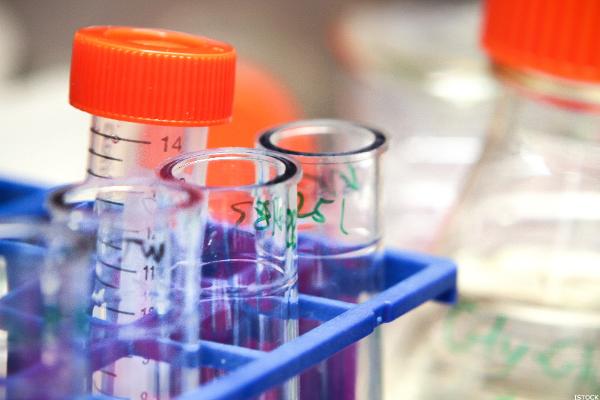The big news out of the biotechnology space as we hit the midpoint of the week is that Insmed Incorporated (NASDAQ:INSM) has successfully completed a late stage trial for one of its lead development assets. The New Jersey based company, which is now priced to a market capitalization in excess of $1.1 billion dollars (subsequent to the market’s response to the recent news) said on Tuesday that its investigation into the safety and efficacy of a drug called ALIS (Arikayce), the lead asset in question, had hit both its primary endpoint and spate of secondary endpoints in its phase III CONVERT study.
For those not familiar with the drug, it’s designed to treat a condition called nontuberculous mycobacterial (NTM) lung disease, which is an infection caused by a type of bacteria and is characterized by symptoms very similar to its tuberculosis counterpart – fever, fatigue, blood in mucus, etc.
The standard of care treatment options in the space are pretty limited (they are basically just a cocktail of antibiotics, some of which might work and some of which will have no effect) and the condition is really tough to get over – lots of individuals just deteriorate over time, especially those that are immunocompromised (elderly, young, etc.).
Anyway, the deal with this drug is that it’s designed to be added to standard of care. It’s an antibiotic called amikacin and it’s been processed with the company’s proprietary liposomal technology, which allows it to be converted into an inhalable formulation. So patients will take standard of care antibiotics (generally through IV, but sometimes in pill form) and at the same time they take an inhaled dose of Insmed’s ALIS.
And it was this combination (addition to SOC) that the trial in question was set up to investigate. The question was: can an inhalable version of an antibiotic help to speed up the recovery of the patient when used first, followed by the cocktail mentioned above.
So what did the data show?
The study demonstrated that the addition of ALIS to guideline-based therapy (GBT), which is just the fancy name used for SOC in this report, eliminated evidence of NTM lung disease caused by MAC in sputum by month 6 in 29% of patients. This compared to 9% of patients on GBT alone, with a p value of <0.0001.
There are two things of note here. First, that the 9% figure demonstrates just how ineffective he standard of care treatment in this space is right now. Second, that the investigative asset can add 20% to the baseline improvement number, which in an antibiotic indication is a very large improvement.
Another key endpoint, what we might refer to as the lead secondary, defined as time to conversion, demonstrated that patients on GBT took approximately 30% longer to convert when compared to patients on ALIS plus GBT (p<0.0001).
So what’s next?
This was a phase III study but things are a little different at this end of the space than in other target indications. Basically, the Insmed drug can go after accelerated approval on this just-collected data and already has breakthrough therapy designation and fast track status and is designated as a qualified infectious disease product (QIDP) under the Generating Antibiotic Incentives Now (GAIN) Act.
What all this translates to is that there should be a dramatically sped up registration process, with the drug now set to go under review by the Division of Anti-Infective Products. And what are the chances of a regulatory green light for the asset once it comes up for review?
In short, pretty great. There’s a real unmet need in the antibiotic space right now, not just because many of the treatments aren’t overly effective in the full target population but because many are also becoming less and less useful because of antibiotic resistance. As such, if a company can show that an alternative formulation can be an effective add on and – just as importantly, that it’s safe – then there’s a strong chance of approval just to get another asset on shelves and another option in the space in the hands of patients and physicians.
Markets have recognized this fact and are trading up on the Insmed as a result. At market open on Wednesday, Insmed is at $27 a piece – a 120 premium to the company’s Tuesday open.
